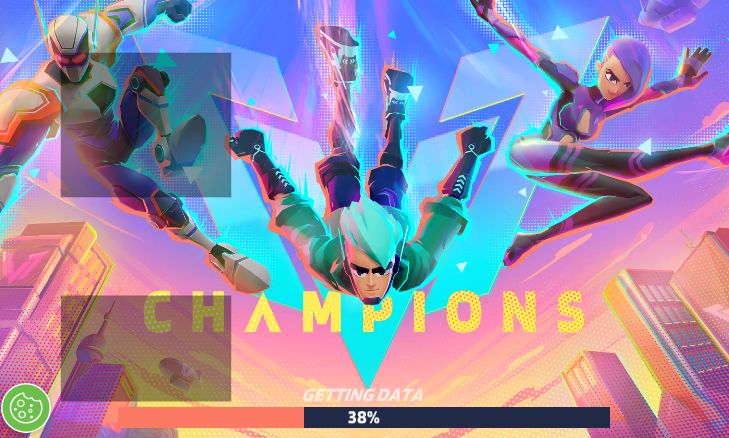Graphic design is a creative field that involves the use of visual elements to convey messages, ideas, and information. It encompasses various forms of visual communication, such as posters, logos, advertisements, websites, and multimedia presentations. The primary goal of graphic design is to effectively communicate a message or concept through aesthetically pleasing and visually engaging designs.
In today’s digital age, graphic design plays an essential role in marketing and branding strategies for businesses. It helps create a strong visual identity that distinguishes a company from its competitors and attracts customers. Graphic designers utilize typography, colour theory, layout principles, and other design elements to create visually appealing compositions that resonate with the target audience.
Furthermore, graphic design extends beyond commercial applications and has significant influence in areas like user interface (UI) design for software and applications. UI designers focus on creating intuitive interfaces that enhance user experience by considering factors such as usability and accessibility.
Overall, graphic design is a versatile discipline that combines creativity with strategic thinking to produce impactful visuals that serve specific purposes – whether it be promoting products or services or improving user interactions with digital platforms.
History of Graphic Design
Graphic design is the art and practice of projecting ideas and experiences with visual and textual content. It combines various elements such as typography, colours, images, and layout to communicate messages effectively. The primary goal of graphic design is to create visually appealing designs that convey a specific message or evoke certain emotions.
The history of graphic design dates back to ancient times when early civilizations used symbols and pictures to communicate information. For instance, cave paintings found in Lascaux, France, depict the early human desire for visual expression. Throughout history, different cultures have utilized various forms of graphic design to communicate their beliefs, traditions, and stories.
In the modern era, graphic design began to take shape during the Industrial Revolution when technological advancements allowed for mass production and distribution of printed materials. Notable designers like William Morris in the late 19th century emphasized craftsmanship in their designs, while others like Paul Rand in the 20th century focused on simplicity and functionality. Today, with digital technology playing a significant role in our lives, graphic design has evolved into a multidisciplinary field that encompasses not only print media but also web design, motion graphics, branding, advertising campaigns, and more.
Elements of Graphic Design
Graphic design is the art of creating visual content to communicate messages effectively. It involves combining various elements such as typography, images, colours, and layout to convey information or evoke specific emotions. One of the key elements of graphic design is typography, which refers to the use of fonts and letterforms. Choosing the right typeface can greatly impact the overall look and feel of a design, as different fonts have distinct personalities. Additionally, kerning (the spacing between letters) and leading (the vertical space between lines) are crucial aspects that affect readability.
Another important element in graphic design is colour. Colours play a vital role in setting the mood and creating harmony within a design. Designers must consider factors such as colour theory, contrast, and saturation when selecting colours for their projects. The psychological effects associated with different hues should also be taken into account to ensure that the intended message is conveyed effectively.
Layout is another critical element in graphic design that influences how information is organized visually. A well-designed layout ensures clarity and navigability while guiding the viewer’s eye through the content seamlessly. Elements such as grids, alignment, hierarchy, and white space contribute significantly to an effective layout by providing structure and balance to designs.
Overall, understanding these essential elements allows designers to create visually appealing graphics that effectively convey messages while engaging viewers’ attention.
Applications of Graphic Design
Graphic design is a creative field that involves the use of visual elements to communicate ideas and messages. It combines various techniques such as typography, photography, illustration, and layout to create visually appealing designs. The applications of graphic design are vast and can be seen in many industries and sectors.
One major application of graphic design is in advertising and marketing. Graphic designers play a crucial role in creating eye-catching advertisements, logos, brochures, packaging designs, and other marketing materials that help businesses promote their products or services effectively. They use their skills to capture the attention of potential customers and convey the brand’s message in a visually appealing way.
Another important application of graphic design is in web design. With the increasing importance of online presence for businesses, graphic designers are essential for creating engaging website layouts, user interfaces (UI), icons, banners, infographics, and other visual elements that enhance the overall user experience. These designs not only attract visitors but also ensure easy navigation and intuitive interaction with the site’s content.
In conclusion, graphic design finds its applications in various industries ranging from advertising to web designing. Its ability to effectively communicate ideas through visual means makes it an integral part of modern-day communication strategies. Whether it is creating captivating advertisements or enhancing the user experience on websites, graphic designers play a pivotal role in conveying messages through visually stunning designs.
Importance of Graphic Design in Marketing
Graphic design is the art and skill of combining text, images, and other visual elements to create visually appealing and impactful designs. It involves using various design principles, such as colour theory, typography, and layout techniques, to convey a message or evoke certain emotions. In marketing, graphic design plays a crucial role in creating memorable brand identities, communicating messages effectively, and attracting target audiences.
Firstly, graphic design helps in building a strong brand identity for businesses. A well-designed logo and consistent branding materials can make a significant impact on how customers perceive a company. It helps establish credibility and recognition in the market by creating a visual representation that resonates with the target audience. Additionally, graphic design ensures consistency across all marketing materials by incorporating the same visual elements throughout different platforms like websites, social media posts, advertisements, etc.
Secondly, graphic design is essential for effective communication in marketing campaigns. It allows marketers to present information in an engaging and visually appealing manner that captures the attention of potential customers. Through carefully chosen colours, fonts, and layouts that align with the brand’s message and the target audience’s preferences, graphic designers can enhance the overall user experience while conveying information clearly.
In conclusion، Graphic design plays a pivotal role in marketing by helping businesses establish their brand identity effectively while ensuring clear communication with their target audience through visually captivating designs. Its significance lies not only in attracting customers but also in creating lasting impressions that promote trustworthiness and loyalty towards brands.
Future Trends in Graphic Design
Graphic design is the art and practice of visual communication, using elements such as typography, images, colours, and layout to convey a message or tell a story. It involves creating visually appealing designs for various mediums such as print, digital platforms, advertising materials, packaging, and more. With the constantly evolving technology and changing consumer preferences, graphic design is experiencing some exciting future trends.
One trend that is expected to shape the future of graphic design is augmented reality (AR) integration. AR allows designers to overlay virtual elements on top of the real world through devices like smartphones or wearable technology. This opens up endless possibilities for creating interactive and immersive experiences in areas such as marketing campaigns, product packaging, or even web design.
Another trend that will likely gain momentum in the future is sustainability-focused design. As environmental concerns become increasingly important worldwide, designers are turning towards eco-friendly practices and materials. This includes using sustainable printing techniques and opting for recyclable or biodegradable materials when creating physical designs. Additionally, there is a growing demand for brands with strong environmental values; hence incorporating sustainability into graphic design can help companies attract environmentally conscious consumers.
In conclusion, the future of graphic design holds exciting prospects, with trends like augmented reality integration and sustainability-focused design taking centre stage. As technology continues to advance and society becomes more aware of environmental issues, it’s crucial for designers to stay updated with these trends in order to create impactful visual experiences that resonate with audiences while keeping up with emerging technologies and sustainable practices.
Conclusion: The Ever-Evolving World of Graphic Design
Graphic design is a creative field that involves the visual communication of ideas and messages using various elements such as typography, imagery, colour, and layout. It encompasses a wide range of mediums, including print materials like brochures and posters, digital designs for websites and social media platforms, as well as motion graphics for videos and animations. The main goal of graphic design is to create visually appealing and effective designs that effectively convey a specific message or evoke certain emotions.
Conclusion: The Ever-Evolving World of Graphic Design.
In conclusion, the world of graphic design is constantly evolving as technology advances and new trends emerge. With the rise of digital platforms, there has been a shift towards more interactive and dynamic designs that engage audiences in unique ways. Additionally, the increasing importance placed on user experience has led to the development of more intuitive interfaces and seamless interactions in graphic design.
Moreover, with globalization becoming more prevalent in today’s society, the field of graphic design has also expanded to include multicultural influences. Designers now have access to a wealth of diverse inspirations from different cultures around the world, which allows for richer creativity and innovation.
Overall, it is clear that graphic design will continue to evolve in response to changing technologies, societal shifts, and cultural influences. As designers adapt to these changes by embracing new tools and approaches while staying true to fundamental principles of good design, they will be able to create impactful visuals that resonate with audiences in this ever-evolving world.






